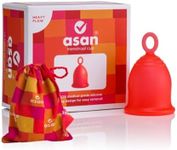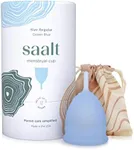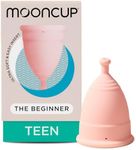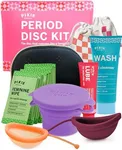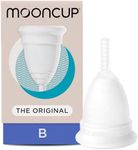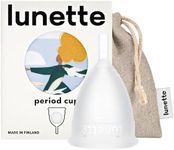Buying Guide for the Best Menstrual Cups
Choosing the right menstrual cup can greatly enhance your comfort and convenience during your menstrual cycle. Menstrual cups are a sustainable and cost-effective alternative to traditional menstrual products like pads and tampons. They are designed to be inserted into the vagina to collect menstrual fluid, and they can be reused for several years with proper care. When selecting a menstrual cup, it's important to consider factors such as size, material, firmness, and capacity to ensure it fits your body and lifestyle needs. Understanding these key specifications will help you make an informed decision and find the best menstrual cup for you.SizeSize is a crucial factor when choosing a menstrual cup, as it affects both comfort and effectiveness. Menstrual cups typically come in two or three sizes, often labeled as small, medium, and large. The right size for you depends on factors such as your age, whether you've given birth vaginally, and the strength of your pelvic floor muscles. Generally, smaller sizes are recommended for younger individuals or those who have not given birth, while larger sizes may be more suitable for those who have given birth or have a heavier flow. It's important to choose a size that fits comfortably and creates a good seal to prevent leaks.
MaterialMenstrual cups are usually made from medical-grade silicone, rubber, or TPE (thermoplastic elastomer). The material is important because it affects the cup's flexibility, durability, and potential for allergic reactions. Silicone is the most common material due to its hypoallergenic properties and flexibility, making it suitable for most users. Rubber cups are less common and may cause allergic reactions in those with latex allergies. TPE is another hypoallergenic option that is slightly firmer than silicone. Consider any material sensitivities you may have and choose a cup made from a material that feels comfortable and safe for your body.
FirmnessThe firmness of a menstrual cup determines how easily it can be inserted and how well it stays in place. Cups range from soft to firm, and the right firmness for you depends on your comfort level and pelvic floor strength. Softer cups are more comfortable for those with sensitive bladders or who are new to using menstrual cups, but they may be more prone to leaks if not positioned correctly. Firmer cups are easier to open and create a secure seal, making them a good choice for those with strong pelvic floor muscles or who are physically active. Consider your comfort and activity level when choosing the firmness of your cup.
CapacityCapacity refers to how much menstrual fluid a cup can hold before it needs to be emptied. This is important for determining how often you'll need to empty the cup throughout the day. Menstrual cups typically hold between 15 to 30 milliliters of fluid, with larger cups offering higher capacities. If you have a heavy flow, you may prefer a cup with a larger capacity to reduce the frequency of emptying. Conversely, if your flow is lighter, a smaller capacity cup may be sufficient and more comfortable. Assess your flow and choose a cup that aligns with your needs to ensure convenience and comfort.
Stem LengthThe stem of a menstrual cup is the part that extends from the base of the cup, making it easier to remove. Stem length can vary, and it's important to choose one that suits your anatomy and comfort preferences. A longer stem can be helpful for those with a higher cervix, as it provides more to grip when removing the cup. However, if the stem is too long, it can be trimmed to avoid discomfort. If you have a low cervix, a shorter stem or a stemless cup might be more comfortable. Consider your cervix height and personal comfort when selecting the stem length.
